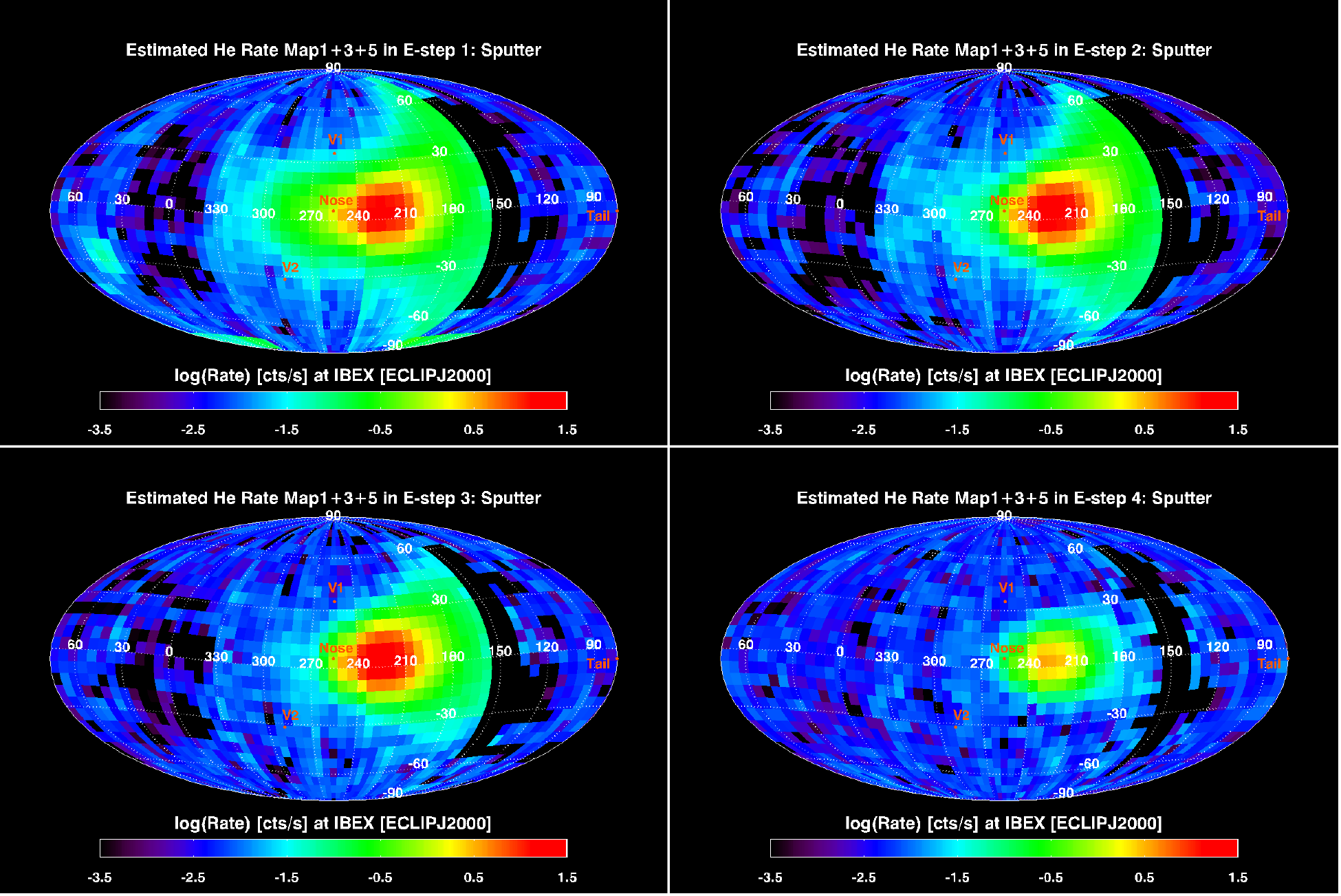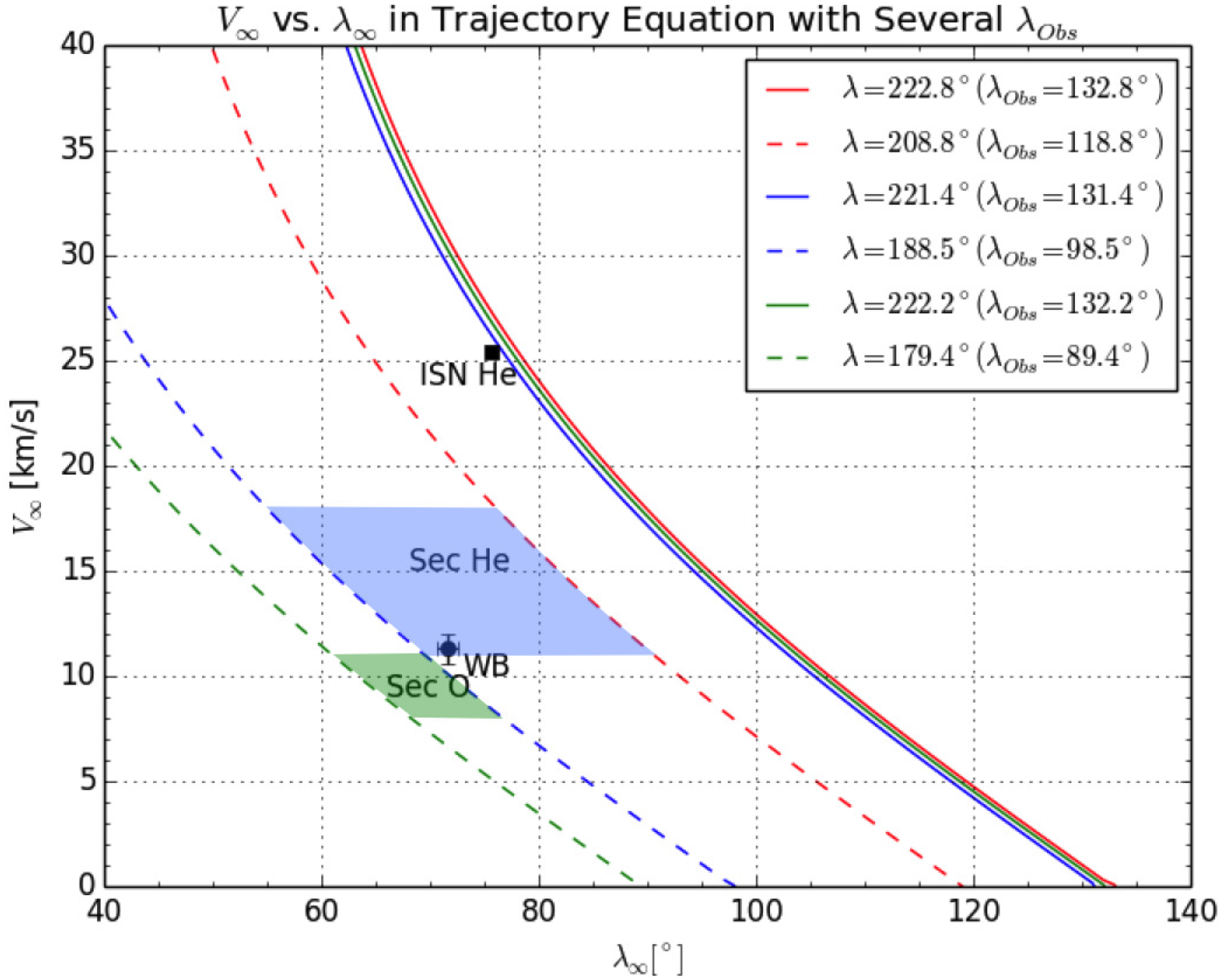IBEX Observations of Secondary Interstellar Helium and Oxygen Distributions
by Park et al.
Abstract: In this study, we investigate the directional distributions of the secondary interstellar neutral He and O populations at Earth's orbit. The secondary populations are created by charge exchange between interstellar neutral atoms and interstellar ions in the outer heliosheath. Using the IBEX-Lo He and O observations during the winter-spring seasons (early December to early June) in 2009-2011, we produced all-sky maps for He and O atoms with sputtering corrections. These sky maps include the directional distributions of the primary interstellar neutral gas and secondary populations. Our investigations reveal that the secondary He and O populations are observed in the ecliptic longitude range 160°-210°. The peak longitudes of the secondary He and O appear to be 14°-34° and 38°-43° away from the peak longitude of the primary interstellar gas flow, respectively. These results indicate that the secondary populations have lower bulk speeds relative to the Sun and their flow directions deviate from the primary gas flow. These results may indicate that one side of the outer heliosheath is thicker than the other side relative to the flow direction of the primary interstellar gas flow.


